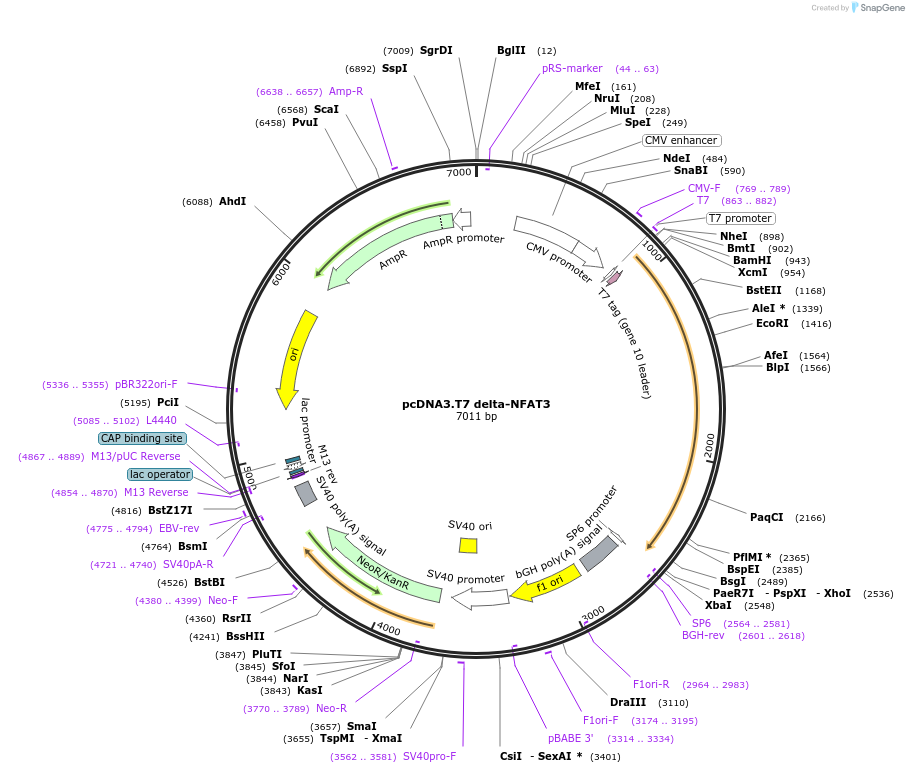pcDNA3.T7 delta-NFAT3
(Plasmid
#28224)
-
Depositing Lab
-
Publication
-
Sequence Information
Ordering
| Item | Catalog # | Description | Quantity | Price (USD) | |
|---|---|---|---|---|---|
| Plasmid | 28224 | Standard format: Plasmid sent in bacteria as agar stab | 1 | $85 | |
Backbone
-
Vector backbonepcDNA3
-
Backbone manufacturerInvitrogen
- Backbone size w/o insert (bp) 5469
-
Vector typeMammalian Expression
-
Selectable markersNeomycin (select with G418)
Growth in Bacteria
-
Bacterial Resistance(s)Ampicillin, 100 μg/mL
-
Growth Temperature37°C
-
Growth Strain(s)DH5alpha
-
Copy numberHigh Copy
Gene/Insert
-
Gene/Insert nameDelta NFAT3
-
Alt nameNFATC4
-
SpeciesH. sapiens (human)
-
Insert Size (bp)1593
-
MutationhNFAT3 WT deleted amino acids 1-342
-
GenBank IDNM_004554
-
Entrez GeneNFATC4 (a.k.a. NF-AT3, NF-ATC4, NFAT3)
- Promoter CMV
-
Tag
/ Fusion Protein
- T7 (N terminal on backbone)
Cloning Information
- Cloning method Restriction Enzyme
- 5′ cloning site BamHI (not destroyed)
- 3′ cloning site BamHI (not destroyed)
- 5′ sequencing primer CMV-F
- 3′ sequencing primer BGH-rev (Common Sequencing Primers)
Resource Information
-
A portion of this plasmid was derived from a plasmid made byTim Hoey
-
Articles Citing this Plasmid
Terms and Licenses
-
Academic/Nonprofit Terms
-
Industry Terms
- Not Available to Industry
Trademarks:
- Zeocin® is an InvivoGen trademark.
These plasmids were created by your colleagues. Please acknowledge the Principal Investigator, cite the article in which the plasmids were described, and include Addgene in the Materials and Methods of your future publications.
-
For your Materials & Methods section:
pcDNA3.T7 delta-NFAT3 was a gift from Sebastien Jauliac (Addgene plasmid # 28224 ; http://n2t.net/addgene:28224 ; RRID:Addgene_28224) -
For your References section:
NFAT3 transcription factor inhibits breast cancer cell motility by targeting the Lipocalin 2 gene. Fougere M, Gaudineau B, Barbier J, Guaddachi F, Feugeas JP, Auboeuf D, Jauliac S. Oncogene. 2010 Apr 15. 29(15):2292-301. 10.1038/onc.2009.499 PubMed 20101218





